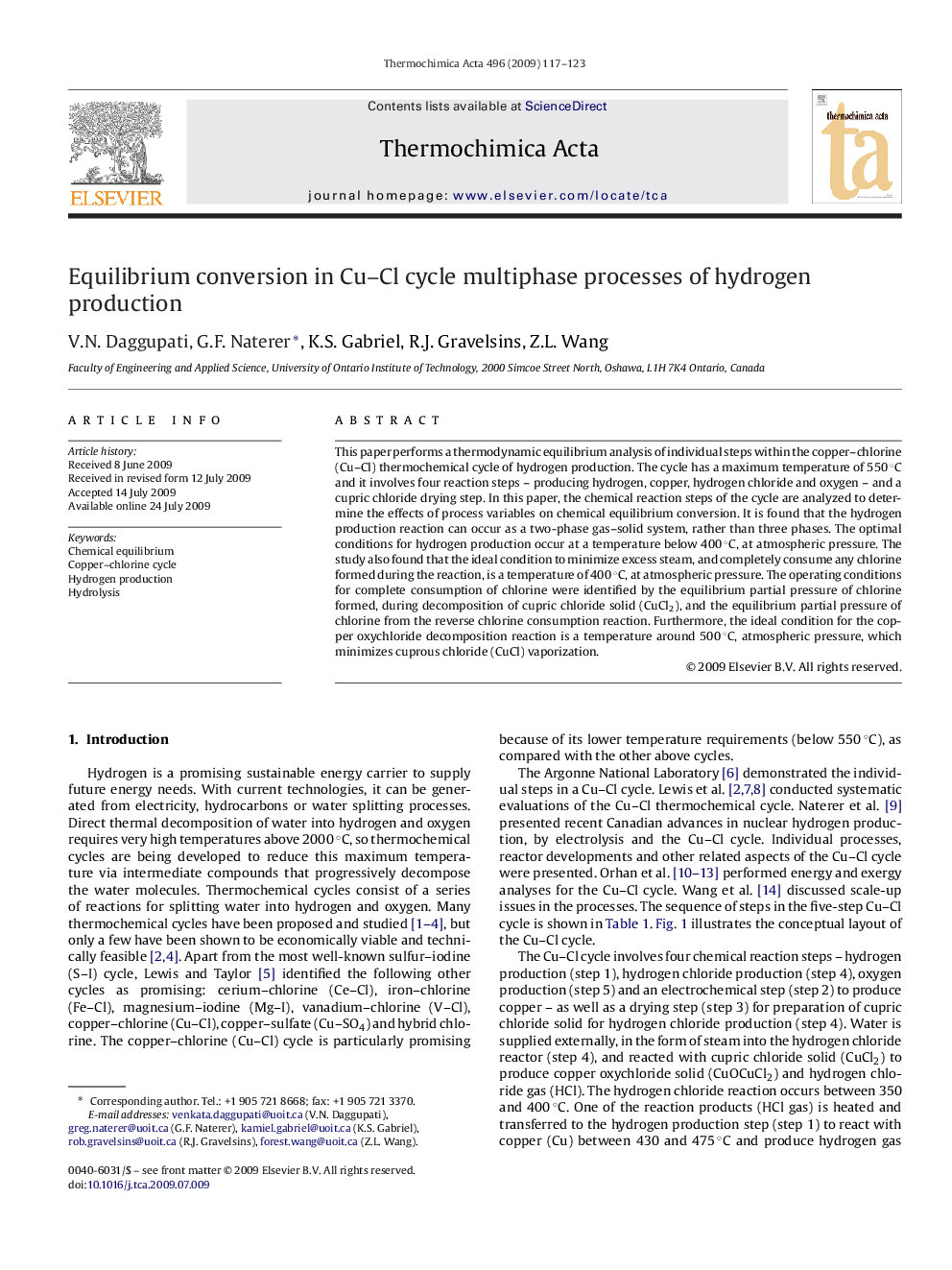| کد مقاله | کد نشریه | سال انتشار | مقاله انگلیسی | نسخه تمام متن |
|---|---|---|---|---|
| 675012 | 1459586 | 2009 | 7 صفحه PDF | دانلود رایگان |

This paper performs a thermodynamic equilibrium analysis of individual steps within the copper–chlorine (Cu–Cl) thermochemical cycle of hydrogen production. The cycle has a maximum temperature of 550 °C and it involves four reaction steps – producing hydrogen, copper, hydrogen chloride and oxygen – and a cupric chloride drying step. In this paper, the chemical reaction steps of the cycle are analyzed to determine the effects of process variables on chemical equilibrium conversion. It is found that the hydrogen production reaction can occur as a two-phase gas–solid system, rather than three phases. The optimal conditions for hydrogen production occur at a temperature below 400 °C, at atmospheric pressure. The study also found that the ideal condition to minimize excess steam, and completely consume any chlorine formed during the reaction, is a temperature of 400 °C, at atmospheric pressure. The operating conditions for complete consumption of chlorine were identified by the equilibrium partial pressure of chlorine formed, during decomposition of cupric chloride solid (CuCl2), and the equilibrium partial pressure of chlorine from the reverse chlorine consumption reaction. Furthermore, the ideal condition for the copper oxychloride decomposition reaction is a temperature around 500 °C, atmospheric pressure, which minimizes cuprous chloride (CuCl) vaporization.
Journal: Thermochimica Acta - Volume 496, Issues 1–2, 10 December 2009, Pages 117–123